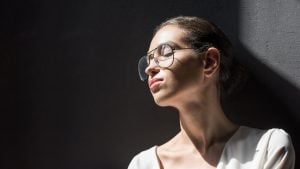

As the name suggests, natural light photography involves using natural light to illuminate your subjects. Unlike studio setups with complex lighting arrangements, you only need the sun. It has plenty of advantages, especially if you’re just starting out. For starters, you don’t need to invest extra money into lighting gear. And natural light is always available to you – during daytime, understandably.
But it also comes with a few challenges. In this video from B&H, portrait photographer Lotta Milde goes through the good and the bad of natural light portraiture, putting lots of knowledge into a five-minute video.
Embracing the different types of natural light:
Throughout the day, the sun paints the world with diverse lighting conditions. Lotta explores the three main types you’ll encounter.
Direct sunlight
This midday sun creates dramatic, defined shadows and a bold look. To manage the harshness, position your subject strategically, perhaps directly facing the sun. However, have their eyes for a moment, and count to three for them to open them and for you to take the shot. Otherwise, the bright sunlight will be very uncomfortable for your subject’s eyes.
With this type of sunlight, you can also find a shaded background for better contrast and depth in your portraits.
Diffused light
Diffused light is what you get on overcast days, and it’s a nice, flattering light many portrait photographers love. It’s a softer, more forgiving light, without harsh shadows and contrast on the subject’s face. This is ideal for beginners, as it minimizes harsh shadows and highlights skin tones beautifully.
If you’re out on a sunny day, you can still get this type of lighting. Find a shaded place and take photos of your model there instead of in the direct sunlight.
Backlight
Backlight is another type of lighting that many photographers absolutely love. But from my experience, it’s also the trickiest for beginners (or is it just me?). Still, I encourage you to play with it and shoot during the golden hour, when the sun is low on the horizon. This type of lighting casts a warm glow around your subject, creating a dreamlike atmosphere.
Level it up
Now that you’re familiar with the basics, Lotta gives some tips for elevating your natural light portraiture game.
Mind the background
Pay close attention to the background when taking portrait photos outdoors. Opt for something simple and darker to avoid distractions and allow your subject to shine against a dark background. On overcast days, consider excluding the sky from the frame as it looks dull and makes your images flat.
Embrace reflectors and surfaces
Even with natural light, you can control its direction. How? Well, simply use a reflector to bounce light back onto your subject. You can also position them near a white or black wall to observe the dramatic shift in lighting on their face.
Catch the catchlights
Those tiny reflections in your subject’s eyes, aka “catchlights,” add life and depth to portraits. They’re small yet very powerful additions to your portraits, so pay attention to them and do your best to capture them. You can either use your reflector or strategically position your subject to capture them naturally.
Experiment with depth of field
For portraits, photographers often use a shallow depth of field to blur the background and draw focus to the subject’s face. Shaded areas are perfect for this technique, allowing you to use a wider aperture without overexposing the image.
Still, I encourage you to play with the depth of field and include the surroundings into your images too, creating environmental portraits that tell a broader story.
What about glasses?
I noticed in Lotta’s video that both of her models wear glasses, so I wanted to throw in some tips for photographing models who wear them. It can be tricky because of the glare. Thankfully, you can overcome this by considering the angle of incidence when placing your subject. This can be tricky since you can’t move the sun – but you can change the position of your model.
Remember, the most crucial element is your creativity. Don’t be afraid to experiment, break the rules, and make mistakes. Every portrait is a collaboration between the photographer and the subject, so make sure you work together and have fun.
[Natural Light Portraiture: What You Need to Know | B&H Photo Video Pro Audio]







